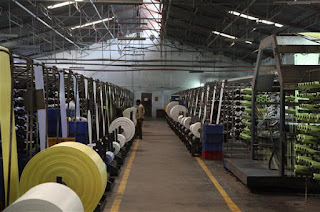5:1 vs 6:1 Safety Guidelines for FIBC
When using bulk bags, it is important to use the
instructions provided by both your supplier and the manufacturer. It is also
important that you don’t fill bags over their safe working load and/or reuse
bags that aren’t designed for more than one use. Most bulk bags are
manufactured for a single use, but some are specifically designed for multiple
uses. Let’s examine the differences between 5:1 and 6:1 bulk bags and determine
what type of bag is right for your application.
What is a 5:1 bulk bag?
Most woven polypropylene bulk bags are manufactured for one
use. These single use bags are rated at a 5:1 safety factor ratio (SFR). This
means that they have the ability to hold five times the amount of their safe
work load (SWL). Remember, although the bag is rated to hold five times the
rated safe working load, doing so is unsafe and is not recommended.
What is a 6:1 bulk bag?
Some woven
polypropylene bulk bags are specifically manufactured for multiple uses. These
multiple use bags are rated at a 6:1 safety factor ratio. This means they have
the ability to hold six times their rated safe working load. Just like 5:1 SFR
bags, it is not recommended that you fill a 6:1 SFR bag over its SWL as doing
so can result in an unsafe working environment.
Although the bag is rated for multiple uses, this doesn’t
mean you can use it over and over again without adhering to specific safe use guidelines.
Multiple use bags should be used in a closed loop system. After every use, each
bag should be cleaned, reconditioned, and qualified for reuse. The bag should
also be used for storing/ transporting the same product in the same application
every time.
1.
Cleaning
·
Remove
all foreign matter from the bags interior
·
Ensure statically held dust is less than four
ounces total
·
Replace liner if applicable
2.
Reconditioning
·
Replace
web ties
·
Replace labels and tickets critical to safe
woven polypropylene bulk bag use
·
Replace cord-locks if necessary
3.
Reasons for rejecting a bag
·
Lift strap damage
·
Contamination
·
Damp, wet, mould
·
Wood splinters
·
Printing is smeared, faded or otherwise
unreadable
4.
Tracking
·
The manufacturer should maintain a record of
origin, product used in the bag and the quantity of uses or turns
5.
Testing
·
Bags should be randomly selected for top lift
testing. The frequency and quantity shall be determined by the manufacturer
and/or user based on their specific situation



Comments
Post a Comment